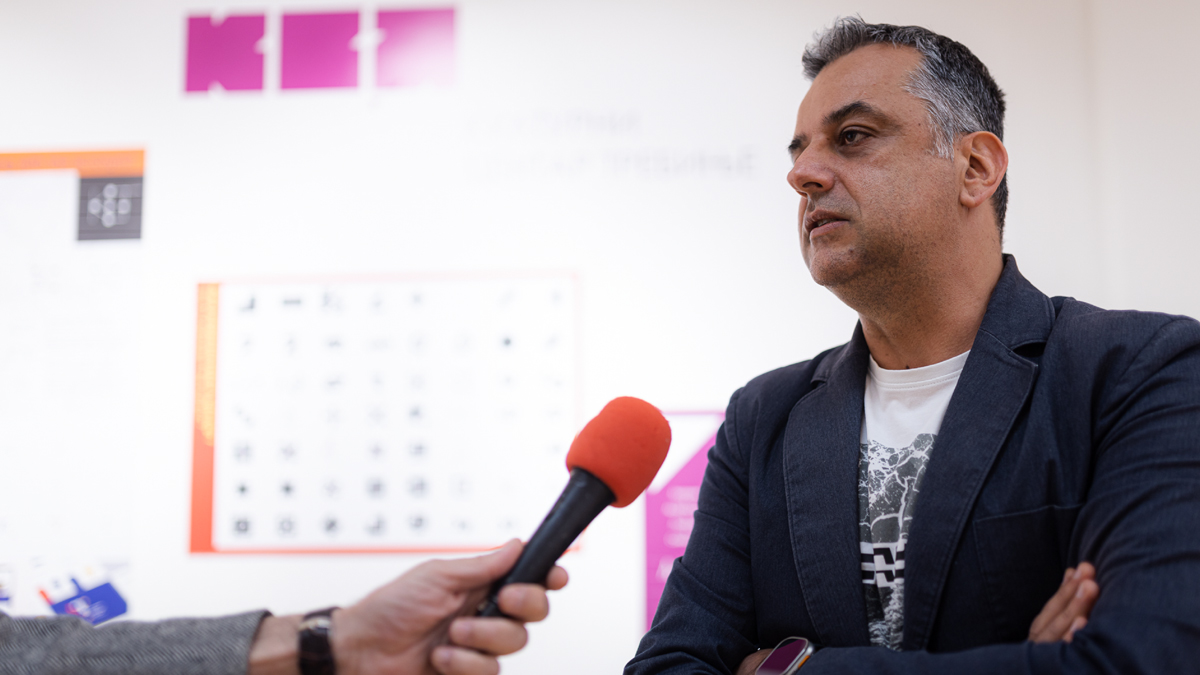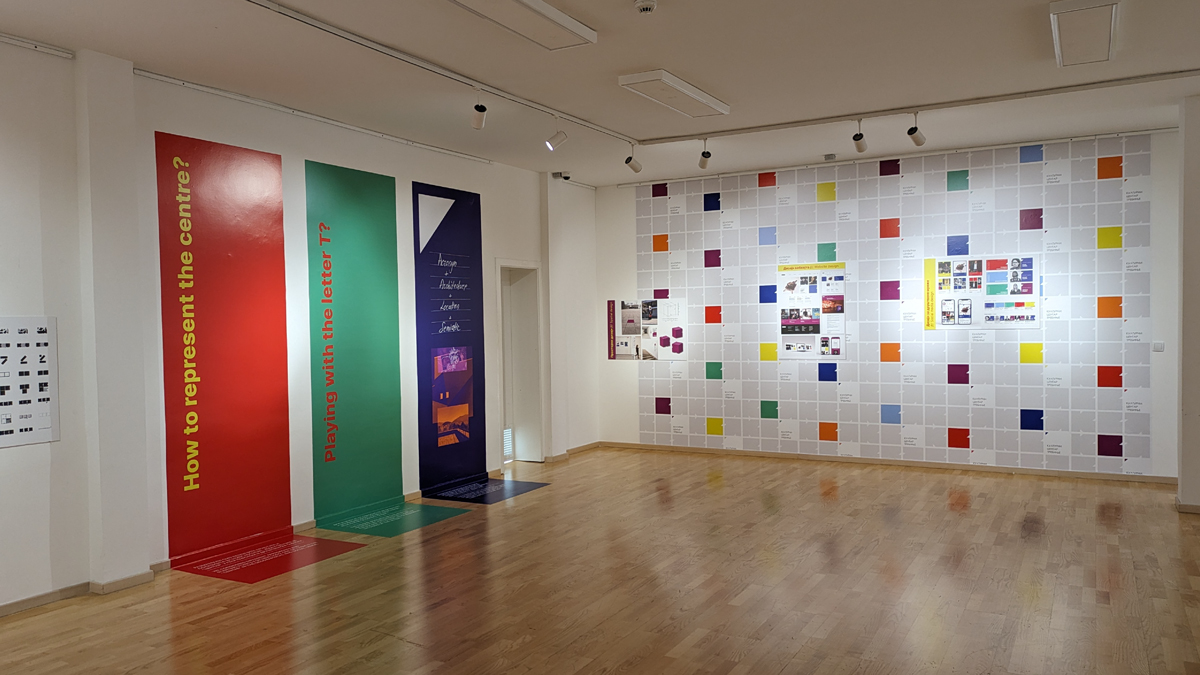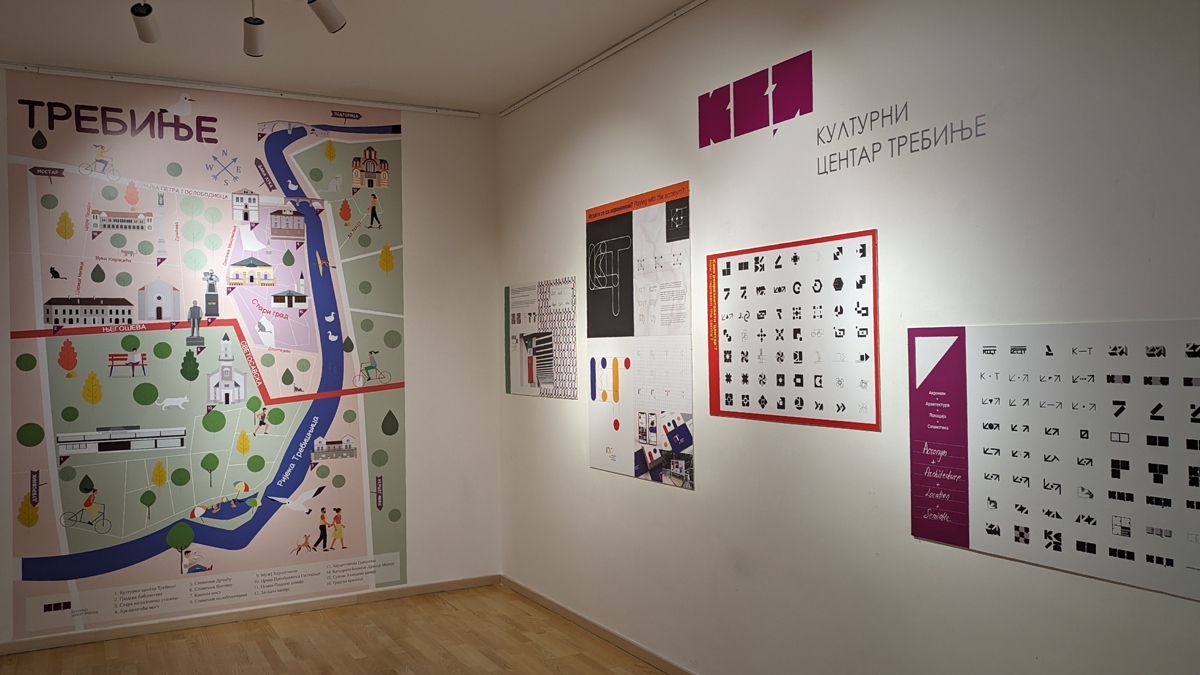During the ongoing Process exhibition at the Cultural Center of Trebinje, we took advantage of the sunny part of the day to engage in a conversation with Miljan Vuković, the center’s director, next to the fountain of the green and colorful City Park “Jovan Dučić”. With the project drawing to a close after 40 months, we discussed his personal leadership journey throughout the project and evaluated whether it has fulfilled the institution’s expectations.
 What was the institution’s key motivation for participating in the project?
What was the institution’s key motivation for participating in the project?
Key motives for the Cultural Centre Trebinje to participate in the ReCulture project included the desire to attract a new audience, refresh its presence in the media, adapt to societal changes, and reaffirm itself as a relevant and innovative institution in the field of culture. Rebranding is crucial for the Cultural Center Trebinje to better position itself in the region as a significant platform for creating new artistic trends in a constantly changing world. As the project involved changes in visual identity, marketing strategies, programmes, and activities to better reflect current trends and audience needs, there was no doubt when joining. On the other hand, the motivation for the cultural institution to be the coordinator of the project was manifold. This included the desire to establish itself as an authority in its field, provide value to the community through innovative ideas and programmes, create new opportunities for collaboration and partnership with other organizations, as well as to gain greater visibility and recognition as a managerial capable institution. The role of coordinator in the project also contributed to the development of the institution’s reputation as one capable of implementing demanding projects, which can attract new resources, funding, and support in future projects. Being a coordinator on such a project can solidify the institution’s position as a key player in its sector, which can attract greater attention from the media, donors, and potential partners. Through project leadership, the institution aimed to demonstrate its expertise, creativity, and innovation capability. Additionally, participating in project management provided an opportunity to establish deeper interaction with the community, build trust and loyalty among the audience, and create a long-term impact on the cultural scene. All of this together contributed to strengthening the institution’s reputation and opened doors for future growth and development opportunities.
At what level are the Western Balkans cultural institutions regarding their visual presentation and identity? After experiencing this project and gaining insights into European practices (including examples from Mucem and exhibitions like Design for Culture), what do you think is mostly lacking in visual communication practices in the region?
Cultural institutions in the Western Balkans vary in their approach to visual presentation and identity. While very few have modern and appealing presentations that reflect contemporary trends and standards, others lag behind due to a lack of recognition of the need for rebranding, financial resources, expertise, or infrastructure. However, this is slowly changing, and there is increasingly greater recognition of the importance of quality visual presentation in culture, prompting institutions to improve their branding strategies to attract audiences and achieve greater impact. Institutions, albeit gradually, are beginning to collaborate with designers, marketing professionals, and artists to create attractive and authentic visual identities that reflect their mission, values, and programme offerings. Although each cultural institution in the Western Balkans has its unique characteristics, there are some general trends regarding visual presentation and identity. For example, some institutions have made efforts to modernize their websites and social media to improve communication with the audience and promote their programmes and events. Additionally, more and more institutions recognize the importance of inclusivity in their communication and strive to create visual identities that are accessible and appealing to different segments of society. However, there are still challenges such as a lack of financial resources or trained personnel in the field of design and marketing, which significantly limits institutions’ opportunities to enhance their visual presentation. Based on experience from projects and insights into European practices, especially those gained from our visit to MUCEM, several areas can be identified where visual communication practices in our region may not be as developed. The lack of innovative approaches in visual communication limits creativity and originality in how cultural institutions present themselves to the audience. Furthermore, the lack of a clear branding strategy leads to inconsistency in the visual identity of cultural institutions, making it difficult to recognize and understand their mission and programmes. Unclear and inaccessible information about the programmes, events, and content of cultural institutions make it difficult for the audience to stay informed and engage in cultural activities. The lack of collaboration with experts in design, marketing, and communications limits institutions in their efforts to enhance their visual communication and branding. Working to improve these areas can strengthen the visual communication of cultural institutions and enable them to communicate more effectively with the audience and have a greater impact on society.
This project represents an overlap of European design and cultural standards with the potential of young designers from the WB countries. What contribution would you highlight from EU partners in working with you or on the project in general?
EU partners have made a significant contribution to the project. They brought rich experience and expertise in the fields of design and culture, thus enriching the project and providing valuable mentorship to young designers from the Western Balkans countries. In addition to iCP and EU mentors, Mucem has made a significant contribution through its institutional experience. With access to greater resources such as financial support, technological infrastructure, and professional networks, they facilitated the more efficient implementation of the project and provided support to other partners. Partnership with EU institutions has opened doors to new collaborations, partnerships, and opportunities for knowledge exchange and experience-sharing at the international level, contributing to the professional development of young designers and cultural institutions in the Western Balkans. This developed partnership has increased the visibility of the project and its participants internationally, which can help expand their influence and contribute to the international recognition of young designers from the Western Balkans countries in the future. Overall, partnership with EU institutions has provided valuable resources, knowledge, and support that have strengthened the project and contributed to the development of the design and cultural scene in the Western Balkans.
Developing a new identity is a complex process. What was crucial in working with the design team?
In working with the design team, open and clear communication was established from the outset, which was crucial for understanding the project’s needs and goals, as well as ensuring that ideas and concepts were properly developed. This enabled team members to exchange ideas, create new concepts, and find innovative solutions for developing a new identity. A deep understanding of the institution and the project’s target audience allowed the design team to create an identity that effectively communicates with the audience and achieves the desired goals. The openness of the Cultural Center’s management to feedback and willingness to adapt ideas and concepts was an important factor in the identity development process. Under the mentorship of Nada Arnaut, the design team demonstrated respect for set deadlines and budgets, which was important to ensure that the project progressed efficiently and without unnecessary delays. All these components together contributed to the successful development of the new CCT identity through effective collaboration with the design team.
 Was there any part of the process particularly challenging or unexpected, and how could it have been prevented? Were some activities unnecessary, or were there any missing?
Was there any part of the process particularly challenging or unexpected, and how could it have been prevented? Were some activities unnecessary, or were there any missing?
One of the challenges in the process of developing the new CCT identity was finding a balance between different needs and expectations, as well as aligning creative visions with practical constraints. At the beginning of the work on the new identity, we gave designers the freedom to explore, but to avoid unnecessary wandering, we clearly outlined the project’s goals. We made efforts to prevent a lack of communication between team members and CCT to avoid misunderstandings and prolonged development processes. Occasionally, a lack of focus would arise during the process. By defining a clear work plan and priorities, we attempted to help maintain the focus and efficiency of the designers. Analyzing the process after the project’s completion will help identify potential challenges and opportunities for improving such activities in the future.
The project officially ends in a few months, but a significant task lies ahead for you. What are your initial steps to ensure the audience adequately embraces your institution’s new visual identity?
The initial steps in promoting the institution’s new visual identity are focused on gaining acceptance of the new solutions by the audience. We have partially developed a launch campaign that gradually introduces the institution’s new visual identity in a creative and engaging manner. We will actively communicate with the audience through various channels, including social media, email, website, and other communication platforms, to inform them about the changes and encourage engagement. By organizing a final exhibition, we have invited the public to personally experience the institution’s new visual identity and engage in interactive activities. Furthermore, we will ensure that institution employees are well-informed about the new visual identity and have the necessary information and tools to effectively communicate with the audience. We plan to continuously monitor the audience’s reaction to the new visual identity and analyze the results through surveys and social media analytics to identify any issues or opportunities for improvement. These steps will help us ensure the proper acceptance of the institution’s new visual identity by the audience.
What new insight or skill in working with partners and young designers have you gained during the three-year process? Has the project offered (or confirmed) any working/thinking methods you plan to apply in your future work?
Throughout the three-year process of working with partners and young designers, I have gained a deep understanding of the importance of flexibility, openness to collaboration, and continuous learning. I have realized how crucial it is to position oneself as a partner and understand the needs, desires, and limitations of both partners and young designers in order to successfully collaborate. Agility in work has been a part of everyday processes as the ability to adapt to changes. The project has reaffirmed to me the importance of creating an inclusive environment where all team members have the opportunity to express their ideas and contribute to the project. The project work process has been a continuous learning process for me, in which I have constantly acquired new skills, knowledge, and experiences. Regarding working methods and thinking, the project has reaffirmed the importance of an interdisciplinary approach, teamwork, and focusing on the user as the central point of the design process. I plan to apply these principles in my future work to achieve successful and efficient results in the projects we undertake.
What is your fondest association with “ReCulture”?
My favorite association with “ReCulture” is the idea of partners, young designers, and mentors coming together to renew, refresh, and revitalize the image of four cultural institutions. “ReCulture” suggests the concept of revival and transformation of culture through innovation, collaboration, and inclusivity. It’s an inspiring vision that highlights the power of design as a driver of positive change in society.
